We continue reviewing advanced cooling systems. Today we are going to examine two High-End coolers from Thermaltake -- BigTyp VP and MaxOrb EX. Formally, both of them are not hot new products, being officially announced several months ago. But they have just found their way to retail stores in our region, so they are still "on the crest of the wave", so to speak, as they offer a very interesting and promising set of properties. Another curious fact is that BigTyp VP and MaxOrb EX are actually overhauled versions of their famous predecessors (Big Typhoon and MaxOrb), which managed to form a positive technical image in our reviews. So it will be very interesting from the academical and practical points of view to see how far the new products have gone in the highly competitive layout of forces of High-End coolers, including other Thermaltake products.
So, first of all, let's examine design and usability of our today's products under review, and then we'll proceed to the highlight of our research -- purely practical results of BigTyp VP and MaxOrb EX coolers.
BigTyp VP (CL-P0477)
In technical terms, the new BigTyp VP cooler is a complete copy of the design used in the previous BigTyp 120VX model. The cooler is based on the absolutely identical heat sink (two horizontal aluminum fin-stacks, six copper heat pipes (6 mm in diameter), a copper base (50x50x9 mm)) and equipped with absolutely the same fan (120x120x25 mm, Everflow F121225SM, nominal fan speed -- 2000 rpm). Theoretically, a new suffix in the name of this product is just another marketing trick. So you can read a review of the original product. However, there is one interesting addition: the new representative of the BigTyp family is actually not just a cooler, but a kit consisting of a cooler and a fan. And BigTyp VP owes its very existence as an independent model to this very fan (Satellite Fan in Thermaltake terms).
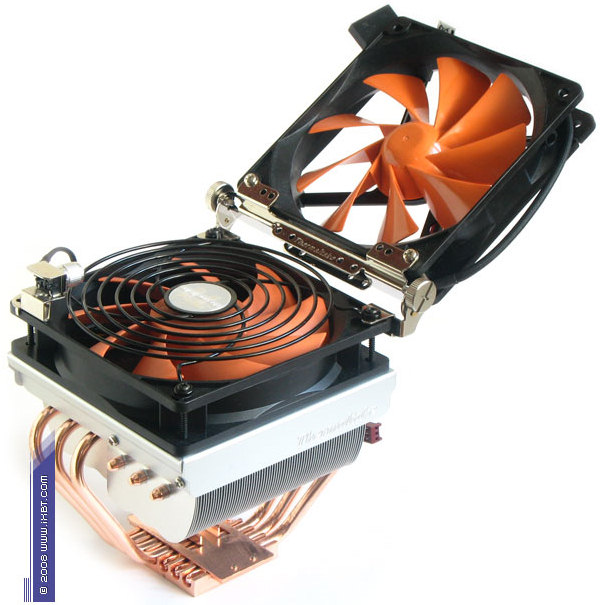
In fact, adding an extra fan to the design is hardly a revolutionary event -- BigTyp VP generally retains its ancestral temper and features no cardinal changes in its configuration. Nevertheless, the idea itself to use this accessory, which can also cool an area of memory modules or the chipset (it depends on how it's installed on the working medium of the cooler), looks fresh and productive. Besides, this extra fan can have a direct effect on amelioration of temperature conditions of a graphics card, especially inside a tightly packed PC case suffering from insufficient redistribution of air flows.

Fortunately, this promising idea is implemented on a good technical level in BigTyp VP. For example, the bundled fan (Hong Sheng A1225L12S, 120x120x25 mm, nominal rotational speed -- 1500 rpm) features interesting aerodynamic design (its impeller is intended for low-impedance channels with low static pressure, but imposing airflow) and normalized technical quality (standard plain bearing, simple but neat electronics). The only oddity is its 4-pin Molex -- considering the obstructed fan speed control and archaic connection, it apparently does not contribute to overall usability.

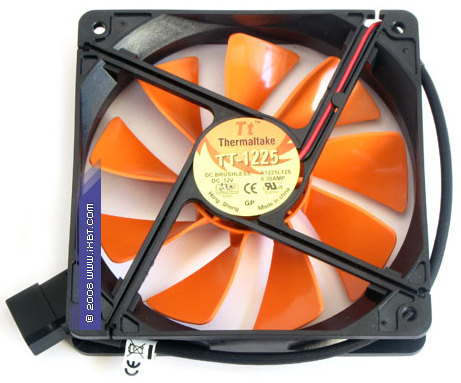
The bundled retention system is also quite interesting -- a mounting frame can be easily attached to the cooler. It allows to adjust its tilt angle (±45° relative to the horizontal line) and contains mounting holes compatible with five standard sizes (from 40x40x10 mm to 120x120x25 mm). However, it seems that Thermaltake engineers overreacted with the miniature fans, because such solutions will have purely practical value only with fast impellers, so noise characteristics will be far from ergonomic. But alternative fans (80x80x25 mm or 92x92x25 mm) are quite another story, they are justified in specific installations, and they definitely deserve appropriate mounting seats.

However, if we make an excursion into the historical domain and compare our product under review with its forefather Big Typhoon (CL-P0114), we'll find out that even the firstborns in this series had their capricious moments, and BigTyp VP still carries them in its genome. Its design does not reveal any significant signs of evolutional mutations. First of all, fin-stacks are too dense, thus looking hydraulically unbalanced: the heat sink offers busy parameters (70 fins in each stack, 55x45 mm, total heat exchange surface area about 7000 cm2), but it inherited a small fin step (1 mm), which hampers ventilation and seriously deteriorates cooling capacity of the device in low-noise modes, even though the original on-board fan is replaced with a more efficient model.
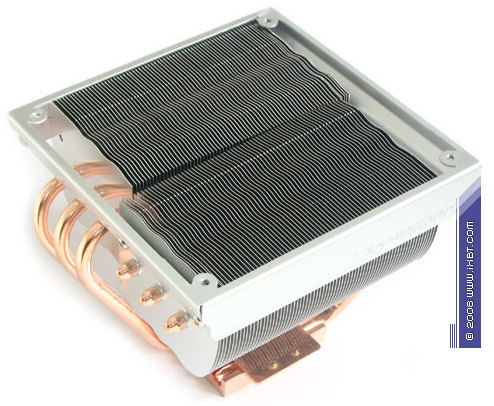
Another negative moment is once again an old sin with the contact between heat pipes and fins: even though BigTyp VP makes a step forward, improving the thermal contact by pressing fins tightly on the pipes (this method is better in thermophysical terms than the thermal glue used in its "parent"), honest soldering is still beyond technological bounds of this cooler family. Frankly speaking, it's all surprising and slightly disappointing. Any way you slice it, Big Typhoon has been manufactured for over three years, and this time span speaks for itself -- it's high time Thermaltake engineers overhaul the product, paying due attention to eliminating design flaws.
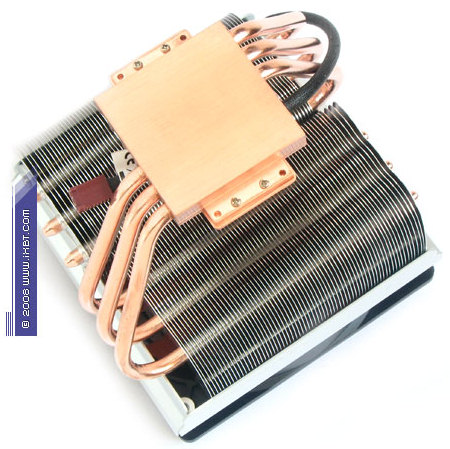
By the way, BigTyp VP is not very neat as far as its usability is concerned. OK, the notorious labour-intensive retention module that came with the older cooler is fortunately replaced with a new truly ergonomic and user-friendly kit (mounting frame with reference clips for Intel LGA775 and a fixing bracket with a lever for AMD Socket AM2). What else do we need? After all those tiresome manipulations with the old retention module, the process of installing the new BigTyp VP is just peachy compared to Big Typhoon.
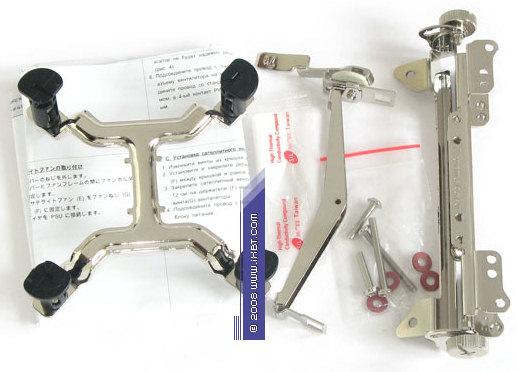
However, after much calculation and focus shifted from ergonomics to weight (just think about it -- the cooler with the bundled fan weighs over 1 kg), you willy-nilly start to have reasonable doubts about the technical side of this installation -- can it be too heavy? It's not exactly a problem for the LGA775 platform (reference clips can cope with much heavier loads), but the weak mounting frame for the Socket AM2 platform is a serious precedent, it's strained almost to the limit. So the updated retention module is a problem rather than an advantage -- the old retention module from the Big Typhoon cooler was inconvenient, labour-intensive, but it was very strong. It even stirs some nostalgic notes.
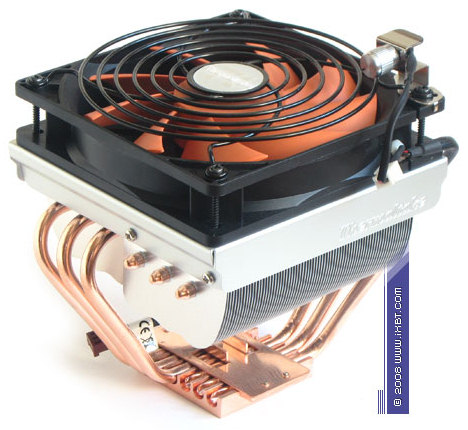
As a result, BigTyp VP with all its innovations is a disputable and unbalanced product -- on one hand we have imposing design, spiced up with interesting solutions; but on the other hand it comes with weak thermal optimization, aggravated by the capricious retention module. Even though its overall functionality undoubtedly make this cooler a High-End product, its resulting technical image still leaves much to be desired.
Write a comment below. No registration needed!









